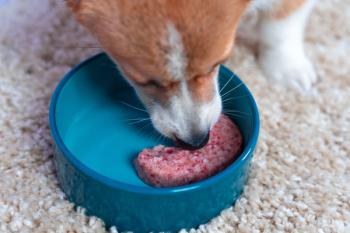
Leading Off: A slice of advice on assessing your patients' nutritional status
Veterinary nutritionist Dr. Joseph Bartges discusses the AAHA Nutrional Assessment Guidelines for Dogs and Cats.
People are more aware of the role of nutrition in their lives, and this awareness is applied to family members including their pets. Nutrition is integral to preventive healthcare and managing diseases. To provide an adequate and appropriate nutritional plan, it is necessary to assess a patient's nutritional status and requirements. Nutritional assessment is an easy process that requires minimal expense in time and finances. It should be routine for all veterinary patients regardless of health status. Often, it involves a team approach that includes veterinarians, veterinary technicians, and staff—and, most important, clients.
Dr. Joseph W. Bartges
On a snowy weekend in Denver in November 2009, the American Animal Hospital Association (AAHA) brought together a task force composed of two veterinary technicians; three veterinary nutritionists, including one who was also an internist; and two general practitioners (see boxed text). The charge for the task force was to develop nutritional assessment guidelines for cats and dogs that could be used daily in private practice to provide optimal patient care. The guidelines were to provide a framework for veterinarians and staff to assist them with evaluating and making a nutritional recommendation for every pet. These recommendations were to be based on a pet's life stage, medical conditions, and lifestyle and were to be reviewed and updated frequently. Because of the extensive involvement of clients in the daily dietary management of these patients, we were also to provide recommendations to veterinary staff on client communication and suggestions for educational tools for the client to aid in communicating their recommendations.
The AAHA Nutritional Assessment Guidelines for Dogs and Cats were published in the July/August 2010 issue of the Journal of the American Animal Hospital Association with the aim of guiding decisions and criteria regarding diagnosis, dietary management, and treatment in specific areas of veterinary healthcare. The guidelines' specific goals are to
- Increase awareness in the profession about the importance of assessing nutritional status in dogs and cats
- Provide nutritional evaluation guidelines to promote optimal animal health and response to disease
- Supply the evidence and tools required to support nutritional recommendations in animals.
The AAHA Nutritional Assessment Guidelines Committee
The guidelines provide a series of questions to be asked, body condition and muscle condition scoring systems, and methods of acquiring and analyzing information related to nutritional status. They provide recommendations for healthy patients as well as patients that are sick, including those requiring critical care. There are additional resources provided for veterinarians, veterinary technicians, and pet owners.
The guidelines can be found at
Joseph W. Bartges, DVM, PhD, DACVIM, DACVN
Department of Small Animal Clinical Sciences
College of Veterinary Medicine
The University of Tennessee
Knoxville, TN 37996
Newsletter
From exam room tips to practice management insights, get trusted veterinary news delivered straight to your inbox—subscribe to dvm360.






